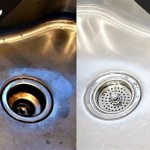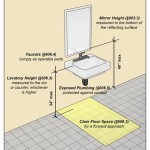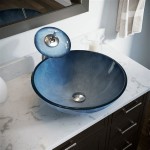Rust Spots In Stainless Steel Sink
Rust spots in a stainless steel sink can be a frustrating problem. Not only are they unsightly, but they can also be difficult to remove. However, the rust in the kitchen sink is not from the sink itself but is due to external factors. Stainless steel is an alloy of iron and chromium. The chromium content is what makes stainless steel resistant to rust. However, if the chromium content is low, or if the surface of the stainless steel is damaged, it can start to rust.
There are a few things that can cause rust spots in a stainless steel sink. One is exposure to chloride ions. Chloride ions are found in many common household products, such as salt, bleach, and tap water. When chloride ions come into contact with stainless steel, they can start to break down the chromium oxide layer that protects the steel from rust. This can lead to the formation of rust spots.
Another thing that can cause rust spots in a stainless steel sink is the presence of iron particles. Iron particles can come from a variety of sources, such as from steel wool or from the water supply. When iron particles come into contact with stainless steel, they can start to rust. This rust can then spread to the surrounding stainless steel, causing rust spots.
There are a few things that you can do to prevent rust spots in a stainless steel sink. One is to avoid using products that contain chloride ions. This includes salt, bleach, and tap water. If you do use these products, be sure to rinse the sink thoroughly with clean water after use.
Another thing that you can do to prevent rust spots in a stainless steel sink is to avoid scratching the surface of the sink. Scratches can provide a place for chloride ions and iron particles to accumulate, which can lead to the formation of rust spots. If you do scratch the surface of the sink, be sure to clean the area thoroughly and apply a sealant to protect it from further damage.
If you do get rust spots in a stainless steel sink, there are a few things that you can do to remove them. One is to use a commercial stainless steel cleaner. These cleaners are specifically designed to remove rust from stainless steel. Be sure to follow the directions on the product label carefully.
Another thing that you can do to remove rust spots from a stainless steel sink is to use a homemade solution of vinegar and baking soda. To make this solution, combine equal parts vinegar and baking soda in a bowl. Apply the solution to the rust spots and let it sit for 30 minutes. Then, scrub the rust spots with a sponge or brush. Rinse the sink thoroughly with clean water and dry it with a clean cloth.
If the rust spots are severe, you may need to use a more abrasive method to remove them. One option is to use a pumice stone. To use a pumice stone, wet the stone and then rub it over the rust spots in a circular motion. Be sure to rinse the sink thoroughly with clean water after using the pumice stone.
Another option for removing severe rust spots from a stainless steel sink is to use a metal polish. Metal polishes are available at most hardware stores. To use a metal polish, apply the polish to the rust spots and rub it in with a soft cloth. Be sure to rinse the sink thoroughly with clean water after using the metal polish.
By following these tips, you can prevent and remove rust spots from your stainless steel sink. With proper care, your sink will stay looking its best for many years to come.

How To Remove Rust From Stainless Steel Sinks Ruvati Usa

Rust In Your Stainless Steel Sink Duncan S Creative Kitchens

How To Remove Rust From Stainless Steel Sinks Bar Keepers Friend

How To Remove Rust Stains From Stainless Steel Pins And Procrastination

How To Remove Chemical Stains From A Stainless Steel Sink Chica Dragon
Stainless Steel Sink Is Rusting After Only 2 Months Diy Home Improvement Forum

How To Remove Rust Stains From Stainless Steel Sinks

Rust In Your Stainless Steel Sink Duncan S Creative Kitchens

How To Clean A Stainless Steel Sink And Your Drain Too

How To Remove Stains From Stainless Steel Sink







